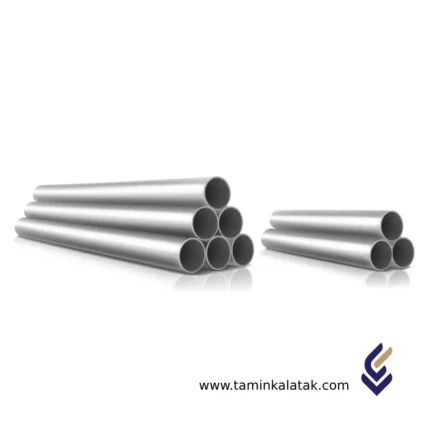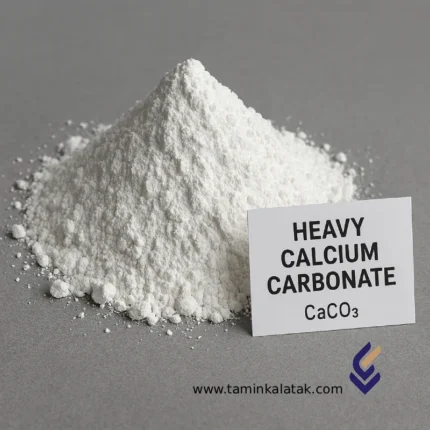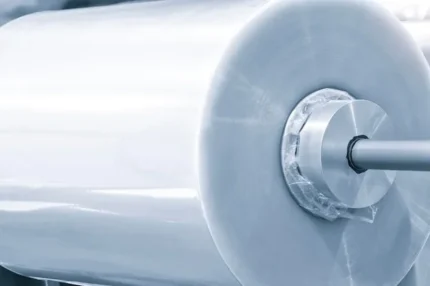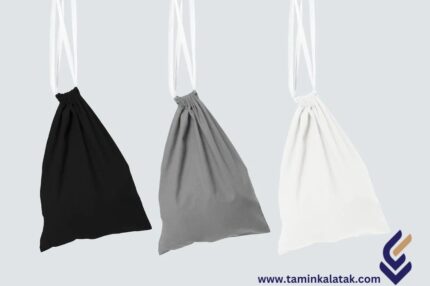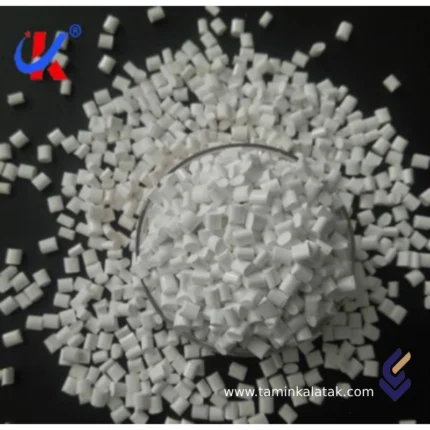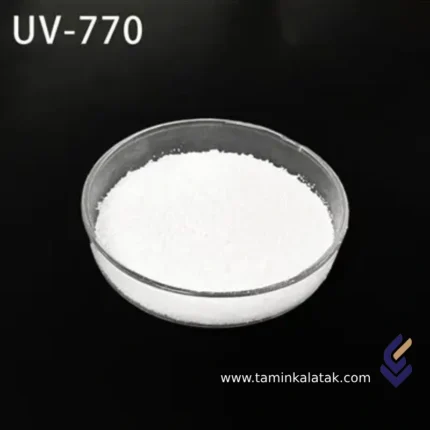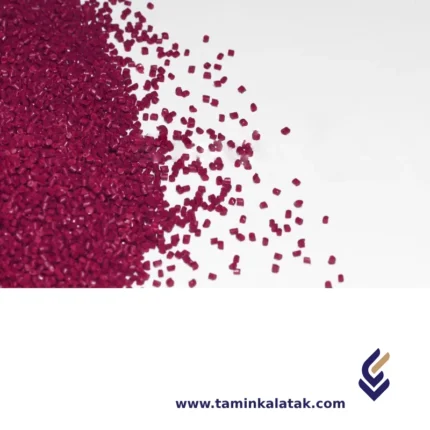HDPE Pipe Compound
Structure HDPE Pipe Compound
The structure of HDPE pipe compound consists of a high-density polyethylene (HDPE) base resin, which provides strength and flexibility. It includes antioxidants to prevent degradation during processing and usage, along with UV stabilizers to protect against sunlight exposure. Thermal stabilizers enhance heat resistance, while processing aids improve extrusion and molding properties. Anti-static agents help reduce static buildup, and pigments are added for color and identification. In black HDPE pipes, carbon black is used for UV protection. Additionally, impact modifiers may be included to enhance toughness and durability.Properties HDPE Pipe Compound
The HDPE pipe compound exhibits excellent properties, making it ideal for various applications. It has high tensile strength and flexibility, allowing it to withstand internal and external pressure. Its outstanding chemical resistance ensures durability against acids, alkalis, and other corrosive substances. The compound is highly resistant to environmental stress cracking and has low moisture absorption, making it suitable for underground and submerged applications. It offers excellent UV resistance when formulated with stabilizers like carbon black, ensuring long-term outdoor performance. HDPE pipe compound also has a smooth inner surface, reducing friction and improving flow efficiency. Additionally, it is lightweight, impact-resistant, and has good thermal stability, allowing it to perform well in a range of temperatures without significant deformation or degradation.Applications HDPE Pipe Compound
- Water supply and distribution systems
- Sewage and drainage networks
- Gas distribution pipelines
- Industrial fluid and chemical transportation
- Agricultural irrigation and water management
- Mining slurry and tailings transportation
- Telecom and electrical conduits
- Geothermal and district heating systems
- Marine and underwater pipelines
- Landfill leachate collection systems
- Trenchless installations like horizontal directional drilling (HDD)
Advantages HDPE Pipe Compound
- High flexibility and lightweight for easy handling and installation
- Excellent chemical resistance to acids, alkalis, and corrosive substances
- Superior impact resistance and toughness, even at low temperatures
- Smooth inner surface reduces friction, enhancing flow efficiency
- UV and weather-resistant, ensuring long-term outdoor performance
- Corrosion and rust-free, unlike metal pipes
- Long service life, often exceeding 50 years
- Leak-proof and joint-free options available through fusion welding
- Environmentally friendly and recyclable material
Disadvantages HDPE Pipe Compound
- Susceptible to damage from excessive heat and high temperatures
- Lower mechanical strength compared to metal pipes
- Can be affected by sharp objects or heavy loads, requiring proper handling
- Initial cost of installation may be higher than some conventional materials
- Requires specialized welding or jointing techniques for secure connections
Heavy calcium carbonate
Heavy Calcium Carbonate (GCC) is an inorganic mineral powder obtained by the mechanical crushing and fine grinding of natural limestone or marble.
Compared to light calcium carbonate (precipitated CaCO₃), it features higher density, larger particle size, and superior rigidity, making it ideal for use in plastics, paints, rubber, construction materials, and paper industries.
Chemical Structure
Heavy Calcium Carbonate is composed of calcium (Ca²⁺), carbon (C), and oxygen (O) ions, with the chemical formula CaCO₃.
It commonly occurs in calcite or aragonite crystal forms and is characterized by its high purity, thermal stability, and chemical inertness in most environments.
| Property | Description |
|---|---|
| Chemical Formula | CaCO₃ |
| Molecular Weight | 100.09 g/mol |
| Crystal Forms | Calcite, Aragonite |
| Bond Type | Ionic |
| Chemical Classification | Inorganic Carbonate |
Physical and Chemical Properties
| Property | Typical Value / Description |
|---|---|
| Appearance | White or off-white powder, odorless |
| True Density | ~2.71 g/cm³ |
| Bulk Density | 0.8–1.4 g/cm³ (depending on particle size) |
| Decomposition Point | ~1339°C (decomposes to CaO + CO₂) |
| Solubility in Water | Very low (≈0.013 g/L at 25°C) |
| pH (suspension in water) | Slightly alkaline |
| Stability | Chemically stable, reacts with acids to release CO₂ |
| Toxicity | Non-toxic, non-flammable |
Main Industrial Applications
1. Plastics and Polymers
Used as a functional filler to improve stiffness, dimensional stability, and reduce production costs.
2. Paints and Coatings
Enhances whiteness, opacity, and surface durability, serving as an economical extender pigment.
3. Rubber Industry
Improves abrasion resistance, tensile strength, and processing performance.
4. Construction Materials
Essential raw material in cement, concrete, decorative coatings, and flooring compounds.
5. Paper Industry
Used as a coating and filler pigment, increasing brightness and printability.
6. Animal Feed
Acts as a source of calcium in feed formulations for poultry and livestock.
Advantages
-
Economical and widely available natural mineral.
-
Excellent thermal and chemical stability.
-
Non-toxic and environmentally safe.
-
Improves mechanical and optical properties in end products.
-
Versatile — suitable for diverse industries including plastics, coatings, and construction.
Limitations
-
Low solubility in water — unsuitable for some aqueous chemical processes.
-
Dust generation during handling requires effective ventilation and PPE.
-
Reacts with acids, releasing CO₂ gas; should not contact acidic materials.
Safety and Storage Guidelines
-
Safety: Non-toxic, but avoid inhalation of dust; use protective masks and goggles during handling.
-
Storage: Keep in a cool, dry place, away from acids and moisture.
-
Packaging: Supplied in multi-layer kraft bags, jumbo bags, or bulk silos.
-
Transportation: Handle according to standard industrial hygiene and chemical transport regulations.
Summary
Heavy Calcium Carbonate (GCC) is a cost-effective, high-performance filler and extender used in numerous industrial applications.
Its stability, whiteness, and mechanical reinforcement properties make it a preferred material in plastics, coatings, construction, and paper manufacturing worldwide.
Hexylene Glycol
PropertiesAppearance: Colorless liquid Odor: Mild, sweetish Density: 0.92 g/mL Melting Point: -40°C Boiling Point: 197°C Solubility: Miscible in water
Applications Hexylene GlycolSolvent: Commonly used as a solvent in various industrial applications. Cosmetics and Personal Care: Acts as a humectant, solvent, and emollient in skin care and hair care products. Organic Synthesis: Used as an intermediate in organic synthesis. Protein Crystallography: Employed as a precipitant and cryoprotectant in protein crystallography due to its amphiphilic nature.
High Density PolyEthylene Film (HDPE)
Structure
The structure of High-Density Polyethylene (HDPE) is characterized by long, linear chains of repeating ethylene units (–CH₂–CH₂–) with minimal or negligible branching. This linear configuration allows the polymer chains to pack closely together, resulting in a high degree of crystallinity (up to 80-90%) and a dense molecular arrangement. The compact structure enhances intermolecular van der Waals forces, giving HDPE its high tensile strength, rigidity, and chemical resistance. The lack of branching, achieved through polymerization methods like Ziegler-Natta or metallocene catalysis, is a defining feature that differentiates HDPE from other polyethylene types, such as Low-Density Polyethylene (LDPE). This tightly packed and highly organized structure makes HDPE a robust and durable material, widely used in industrial and consumer applications.Properties
- High Strength-to-Density Ratio: While lightweight, HDPE exhibits excellent tensile strength, making it suitable for heavy-duty applications.
- Chemical Resistance: It is resistant to a wide range of chemicals, acids, and bases, ensuring durability in corrosive environments.
- Low Moisture Absorption: HDPE’s low water absorption ensures its effectiveness in moisture-prone applications.
- Flexibility and Impact Resistance: It withstands impact and environmental stress, even under extreme conditions.
- Thermal Resistance: HDPE maintains integrity in a broad temperature range, making it ideal for outdoor and industrial uses.
Applications
HDPE plastic is used in a laundry list of applications, as it is currently one of the most versatile plastic materials worldwide. Its strength, impact and corrosion resistance, chemical profile, and other valuable characteristics make it an ideal product material for various industries. Below is a brief list of some of the many uses of HDPE plastic:- Corrosion-resistant piping, HDPE sheet, and stock material
- Fuel tanks
- Food and beverage containers, plastic bottles, milk jugs, cups, etc.
- Shampoo/conditioner bottles, ointment tubes, personal care product containers, etc.
- Trash cans, recycle bins, plastic containers, etc.
- Bread bags, cereal box liners, food storage containers, etc.
- Laundry detergent bottles
- Recycled plastic lumber and composites
- Medical equipment
- 3D printing filament
- Boating components
- Coax cable insulators
- Sewage mains
- Pyrotechnic components
Advantages
- High strength-to-weight ratio
- Low friction coefficient and low moisture absorption
- High impact strength, resistant to dents and scratches
- Mold, mildew, rotting, mineral acids/bases, soil, and weather-resistant
- Resistant to chemicals, water, solvents, acids, detergents, and cleaning fluids
- Very malleable when heated and experiences medium to low shrinkage
- Easily recycled
- Can be sterilized via boiling, does not harbor bacteria well, and is dishwasher safe
- Replaces heavier materials in some applications
- Cost-effective
Disadvantages
- In certain forms, it can be flammable as it is a petroleum-based product
- Exhibits high thermal expansion
- Weak to oxidizers and chlorinated hydrocarbons
- Difficult to bond
- Sensitive to stress-cracking in suboptimal environments
High Impact PolyStyrene (HIPS)
High Impact Polystyrene, also known as HIPS or toughened polystyrene, is a type of thermoplastic polymer produced by combining general-purpose polystyrene (GPPS) with elastomers such as polybutadiene. Rubber-reinforced polystyrene exhibits greater impact resistance compared to pure polystyrene while retaining the main advantages of polystyrene, such as flexibility and cost-effectiveness. This material is widely used in everyday equipment. The polymer is usually synthesized through free-radical bulk polymerization.
Structure of High Impact Polystyrene
Chemically, polystyrene is a long-chain hydrocarbon in which alternating carbon centers are attached to phenyl groups (benzene rings). The chemical formula of polystyrene is (C₈H₈)ₙ; it consists of monomers containing carbon and hydrogen atoms.
The material’s properties are determined by short-term Van der Waals attractions between the polymer chains. Since the molecules are long-chain hydrocarbons composed of thousands of atoms, the overall intermolecular attraction is strong. When heated (or rapidly deformed due to its viscoelastic and thermal insulating characteristics), the chains gain more mobility and slide past each other.
This weak intermolecular bonding (in contrast to the strong hydrocarbon backbone) gives the material its flexibility and elasticity. The ability of the system to deform at temperatures above its glass transition temperature allows polystyrene (and, generally, thermoplastic polymers) to soften easily when heated and be molded into various shapes.
In High Impact Polystyrene (HIPS), some polybutadiene rubber is added to the chains. This rubber phase is dispersed within the polystyrene matrix. These dispersed rubber particles act as “shock absorbers,” preventing crack propagation through the polymer.
Properties of High Impact Polystyrene (HIPS)
HIPS combines a range of properties that make it a versatile and widely used material. The key advantages include:
High Impact Strength
By adding butadiene rubber modifiers to standard PS, HIPS becomes highly impact-resistant. This makes it ideal for producing components prone to breakage, such as household appliances and toys.
Excellent Molding and Processability
Due to its low melting point, HIPS can easily be processed through various methods, including injection molding and thermoforming. This property reduces production costs and increases manufacturing efficiency.
Printing Applications
The matte and uniform surface of HIPS enables excellent ink adhesion, making it ideal for printed products, signboards, and advertising packaging.
High Colorability
This polymer material is highly compatible with color masterbatches and can be customized with a wide range of colors—an advantage particularly useful in decorative or consumer goods industries.
Cost-Effectiveness
Compared with other engineering plastics, HIPS is more affordable, making it an economical and popular choice for mass production of parts with good mechanical properties.
Chemical Resistance
HIPS resists weak acids, alcohols, and saline solutions, as well as oils and greases, making it suitable for diverse environments (though it is sensitive to organic solvents).
Compatibility with Additives
HIPS can easily be blended with additives such as antistatic agents, white masterbatch, UV stabilizers, and flame retardants to achieve enhanced properties.
According to ASTM standards, HIPS exhibits a tensile strength of 24.8 MPa (3,600 psi) and a tensile modulus of 1.8 GPa (261 ksi), allowing it to withstand sufficient mechanical stress—making it ideal for packaging and many other products.
Applications of High Impact Polystyrene
From food stores to packaging factories and production lines, this versatile plastic is used across many sectors. Some common examples include:
-
Building applications, such as thermal and acoustic insulation and suspended ceilings.
-
Cutlery, including disposable knives, forks, and spoons used in the food industry.
-
Extruded profiles for exhibition stands and display structures.
-
Containers and trays for the packaging industry.
-
Pipes and lightweight profiles used in household products.
-
Injection-molded parts for assembling toys.
-
Due to its low cost and easy machinability, HIPS is often used as a substitute for die-cast metal in industrial applications.
-
HIPS is also used in transportation industries, forming part of various aircraft and automotive components.
Disadvantages of High Impact Polystyrene
-
HIPS is susceptible to degradation when exposed to many chemicals, including solvents, acids, and alkalis.
-
It exhibits low resistance to very low temperatures and may become brittle.
-
It has limited UV resistance, turning yellow and brittle upon prolonged sunlight exposure.
-
HIPS has poor flame resistance and can ignite easily.
Types of High Impact Polystyrene
HIPS (General Type)
The most commonly used type of high-impact polystyrene, known for its excellent impact resistance suitable for various applications.
HIPS 7240
A special grade of impact-resistant polystyrene produced by Tabriz Petrochemical Company, known for its excellent properties and wide industrial use.
HIPS 6045
Another grade produced by Tabriz Petrochemical Company, featuring strong mechanical characteristics.
Purchasing High Impact Polystyrene
As discussed, High Impact Polystyrene (HIPS) is one of the most widely used polymers in the industry.
If you are looking to purchase high-quality HIPS, we offer HIPS 7240 from reputable brands. These materials feature various Melt Flow Index (MFI) values, high softening points, and are suitable for injection molding and thermoforming processes. To place an order for your desired grade, simply contact our supply specialists.
For up-to-date HIPS pricing, contact our sales team to get the latest market rates.
✅ Direct supply and sale of certified High Impact Polystyrene
✅ Provision of technical analysis and MSDS
✅ Technical consultation for selecting the right grade
✅ Competitive pricing and fast delivery
Contact us to select the most suitable High Impact Polystyrene grade for your production needs.
Production Process of High Impact Polystyrene (HIPS)
High Impact Polystyrene is a widely used thermoplastic produced by modifying general-purpose polystyrene (GPPS) with elastomeric rubbers, especially polybutadiene. This modification enhances toughness, impact strength, and mechanical durability—making polystyrene suitable for applications requiring higher impact resistance.
Tamin Kala Tak Company, as a supplier of raw materials, provides various HIPS grades from reputable manufacturers to deliver high-quality, consistent final products to customers.
HIPS Manufacturing Stages
The production of HIPS in petrochemical and polymer plants generally includes the following steps:
1. Preparation of Styrene Monomer
-
Styrene monomer is obtained from the dehydrogenation of ethylbenzene.
-
High monomer purity (over 99%) is essential for achieving optimal final properties.
-
Stabilizers are added to prevent unwanted polymerization during storage.
2. Addition of Rubber (Polybutadiene)
-
About 5–10% polybutadiene is added to the styrene monomer.
-
The rubber is dissolved in the monomer to ensure proper dispersion during the reaction, forming a rubber phase within the polystyrene matrix.
3. Bulk or Solution Polymerization
-
The polymerization reaction is usually carried out through Bulk Polymerization or Solution Polymerization.
-
Radical initiators (such as peroxides) trigger the reaction.
-
During polymerization, rubber particles disperse within the polystyrene matrix, forming a two-phase structure responsible for improved impact resistance.
4. Reaction Completion and Separation
-
Once the desired polymerization degree is achieved, the reaction is terminated.
-
Solvents (in the solution process) and unreacted monomers are recovered and recycled.
5. Pelletizing and Packaging
-
The molten polymer is extruded and cut into strands to form HIPS granules.
-
The granules are cooled, dried, and packed in multi-layer bags or jumbo bags.
FAQ – High Impact Polystyrene
1. What is the difference between High Impact Polystyrene and General Purpose Polystyrene?
HIPS is a type of thermoplastic polymer produced by adding butadiene rubber to general-purpose polystyrene (GPPS). This structural modification enhances impact resistance, flexibility, and mechanical stability compared to standard GPPS.
2. In which industries is High Impact Polystyrene used?
Due to its excellent moldability and impact strength, HIPS is used in:
-
Household appliance housings (e.g., refrigerators, TVs, vacuum cleaners)
-
Food and dairy packaging
-
Electronic equipment and light industrial parts
-
Toys and decorative products
3. What are the main advantages of High Impact Polystyrene?
-
High resistance to impact and bending
-
Excellent machinability, printability, and colorability
-
Easy processability in injection molding and thermoforming
-
Cost-effective compared to other high-performance thermoplastics
Hindered Amine Light Stabilizers (HALS)
Hindered Amine Light Stabilizers (HALS) are a class of polymer additives used to prevent UV-induced degradation in polymers. These compounds work by scavenging free radicals generated during photo-oxidation, thereby preventing the breakdown of polymer chains.
Chemical Structure of Hindered Amine Light Stabilizers
HALS are typically derivatives of 2,2,6,6-tetramethylpiperidine. Their basic structure includes hindered amine groups that, due to steric hindrance, are resistant to side reactions. During the stabilization process, these compounds convert into aminoxyl radicals (N–O•) and then revert to their original form via the Denisov Cycle, enabling long-term stability.
Properties of Hindered Amine Light Stabilizers
-
High Light Stability: They prevent photodegradation of polymers by scavenging free radicals.
-
Thermal Stability: Perform well at elevated temperatures, although effectiveness may reduce at very high temperatures.
-
Extraction Resistance: Their high molecular weight provides resistance to solvent extraction.
-
Compatibility with Various Polymers: Effective in polyolefins, polyurethanes, and polyesters.
Applications of Hindered Amine Light Stabilizers
-
Automotive Industry: Used in interior and exterior parts to prevent photodegradation.
-
Packaging Industry: Applied in plastic films to extend the shelf life of packaged products.
-
Agriculture: Used in greenhouse films for UV resistance.
-
Construction Industry: Utilized in coatings and building materials for enhanced weather durability.
Advantages of Hindered Amine Light Stabilizers
-
Long-Term Stability: Due to their regenerative cycle, they are not consumed and offer long-lasting protection.
-
No UV Absorption: They do not absorb UV themselves but act by neutralizing free radicals.
-
Color Compatibility: Help maintain color and surface gloss in pigmented systems.
Disadvantages of Hindered Amine Light Stabilizers
-
Ineffective in PVC: They do not perform well in polyvinyl chloride (PVC) due to the presence of released HCl.
-
Sensitive to High Temperatures: Performance may decline at very high processing temperatures.
-
High Cost: More expensive compared to some other types of stabilizers.
HLB number of emulsifiers
Emulsion Formulation:Selecting the Right Emulsifier: By determining the required HLB value for a specific oil phase, you can choose the appropriate emulsifier or blend of emulsifiers to create a stable emulsion. Optimizing Emulsion Stability: Adjusting the HLB value of the emulsifier system can improve the stability of emulsions against factors like temperature changes, pH fluctuations, and mechanical stress. Designing Novel Emulsion Systems: The HLB system helps in the development of innovative emulsion formulations with desired properties, such as controlled release, enhanced bioavailability, and improved sensory attributes. Surfactant Selection: Detergency: Surfactants with high HLB values (13-15) are effective detergents, as they can solubilize dirt and oil. Wetting Agents: Surfactants with moderate HLB values (8-13) can reduce the surface tension of liquids, improving their wetting ability. Solubilizing Agents: Surfactants with high HLB values (10-18) can solubilize hydrophobic substances in aqueous solutions. Formulation Development: Cosmetics: HLB values are used to select emulsifiers for creams, lotions, and other cosmetic products. Pharmaceuticals: HLB values help in the formulation of drug delivery systems, such as emulsions and microemulsions. Food Industry: HLB values are used in the formulation of food products like margarine, mayonnaise, and salad dressings.
Homogenizing Agents
Benefits of Homogenization
- Improved Texture: Produces a smoother, creamier texture in milk and dairy products.
- Enhanced Stability: Prevents cream from separating, ensuring a consistent product over time.
- Better Taste: Uniform distribution of fat enhances the overall taste and mouthfeel of dairy products.
- Nutrient Availability: Smaller fat globules can enhance the digestibility and absorption of nutrients.
Applications of Homogenization
- Milk Production: Ensures consistency and stability in both whole and low-fat milk.
- Dairy Products: Used in the production of cream, yogurt, ice cream, and other dairy products to improve texture and stability.
- Food Industry: Applied to other liquid foods and beverages that require uniform texture and consistency.
Hostaform
StructureHostaform, or polyoxymethylene (POM), has a repeating structure composed of formaldehyde units, which are linked together through methylene (-CH2-) groups. The polymer's backbone consists of alternating ether groups (-O-) and methylene (-CH2-) groups, forming a crystalline structure. This linear structure contributes to its high crystallinity, which gives Hostaform its exceptional mechanical properties such as strength, stiffness, and dimensional stability. The rigid molecular structure is responsible for its low friction and wear resistance, making it ideal for engineering applications that require durable materials. The polymer's chain structure also contributes to its resistance to chemical degradation and thermal stability, allowing it to perform well in harsh conditions.
PropertiesHostaform, or polyoxymethylene (POM), is a high-performance polymer known for its outstanding mechanical and physical properties. It has excellent tensile strength, high rigidity, and toughness, which make it suitable for demanding engineering applications. The polymer exhibits low friction and wear resistance, making it ideal for parts such as gears, bearings, and bushings that are subject to constant motion. Hostaform also boasts high dimensional stability, meaning it maintains its shape and size even under varying temperature and humidity conditions. It has good chemical resistance, withstanding exposure to oils, fuels, and solvents, which makes it valuable for use in automotive and industrial environments. Additionally, Hostaform retains its strength at elevated temperatures, as it has a relatively high melting point. Its ability to act as an electrical insulator further enhances its versatility in electronics and electrical applications. The polymer can be easily processed using standard methods like injection molding, allowing for the production of precise, high-quality parts.
Applications of Hostaform (POM)
- Automotive components (e.g., fuel system parts, bearings, gears, bushings)
- Precision mechanical parts (e.g., pumps, valves, and sliders)
- Electrical connectors and components
- Consumer goods (e.g., latches, handles, appliance parts)
- Industrial equipment (e.g., gears and seals)
Advantages of Hostaform (POM)
- High tensile strength and rigidity, ideal for demanding engineering applications
- Low friction and wear resistance, suitable for moving parts
- Excellent dimensional stability, even under high temperature and mechanical stress
- Good chemical resistance to oils, fuels, and solvents
- Effective electrical insulation properties
- Easy to process using standard molding techniques (e.g., injection molding)
- High durability and long-lasting performance in various applications
Disadvantages of Hostaform (POM)
- Relatively high cost compared to other polymers
- Limited resistance to strong acids and bases
- Susceptible to degradation when exposed to UV light over time
- Can become brittle in low-temperature environments, limiting impact resistance
Hydrochloric acid
Hydrofluoric acid
Hydrogenated Castor Oil
Properties of Hydrogenated Castor OilEmulsifying property: This substance acts as an emulsifier and causes oily and watery substances to mix. Softening property: Hydrogenated castor oil is used as a softener in cosmetic and textile products. Thickening property: This substance can increase the viscosity of products and give them consistency. Hydrophobic property: Hydrogenated castor oil has hydrophobic properties and is used in cosmetic and health products to create a protective layer on the skin.
Hydrogenated Castor Oil ApplicationsCosmetics and Hygiene Industries: In the production of lotions, creams, soaps, shampoos and other cosmetic products As a skin and hair softener and moisturizer As an emulsifier in cosmetic products As a thickening agent in lotions and creams Textile Industry: As a softener in the textile industry As a waterproofing agent in textile products Food Industry: As an anti-sticking agent in food products As an emulsifier in food products

